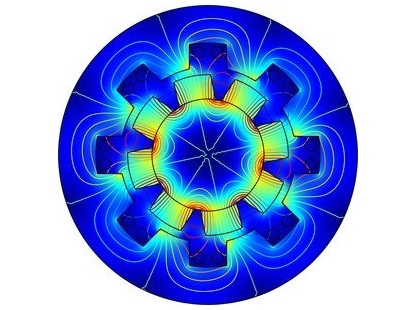مروری بر دستورات همه منظوره
جدول زیر شامل دستورات و روش های همه منظوره موجود است:
FUNCTION | PURPOSE |
get* and Selection Access Methods | Access objects of the basic data types |
set() | Assign objects of the basic data types |
setEntry() | Set vector property value at specified entry |
setIndex() | Assign objects at indices of the basic data types |
Selections | Selections |
ModelUtil | Model object utility methods |
model | Model object |
model.attr() | Model entity list methods |
model.attr(<tag>) | Model entity methods |
model.batch() | Batch jobs |
model.bem() | Boundary elements (BEM) |
model.coeff() | Coefficient form equations |
model.colorTheme(), model.imageColorTheme() | Color themes, See Color Themes. |
model.common() | Common definition nodes in components |
model.component() | Model component nodes |
model.constr() | Constraints |
model.coordSystem() | Coordinate systems, PMLs, infinite elements, and absorbing layers |
model.cpl() | Nonlocal couplings |
model.elem() | Elements |
model.elementSet() | Mesh element sets |
model.extraDim() | Extra dimensions |
model.field() | Fields |
model.form() | Settings forms |
model.frame() | Frames |
model.func() | Functions |
model.geom() | Geometry sequences |
model.group() | Load groups and constraint groups |
model.init() | Initial values |
model.intRule() | Integration orders |
model.massProp() | Mass properties |
model.material() | Materials |
model.mesh() | Meshing sequences |
model.methodCall() | Model methods |
model.modelNode() | Model nodes (component nodes; see model.component()) |
model.multiphysics() | Multiphysics features container |
model.nodeGroup() | Group nodes in the model |
model.ode() | Global equations |
model.opt() | Optimization interface |
model.pair() | Pairs |
model.param() and model.result().param() | Parameters |
model.physics() | Physics |
model.probe() | Probes |
model.reduced() | Reduced-order modeling |
model.result() | Postprocessing interface |
model.savePoint() | Manage selections and hide features used by result features |
model.selection() | Named selections |
model.shape() | Shape functions |
model.sol() | Solver sequences |
model.solverEvent() | Events |
model.study() | Studies |
model.thermodynamics() | Thermodynamics interface |
model.unitSystem() | Unit systems |
model.variable() | Variables |
model.view() | Views |
model.weak() | Weak form equations |
درباره برچسب های معتبر
تگ رشته ای است که از آن برای ارجاع به ویژگی مدل استفاده می کنید. هنگام تعیین یک برچسب، باید الزامات قالب زیر را برآورده کند: با یک کاراکتر a–z یا A–Z شروع کنید و سپس با هر تعداد _ (خط زیر)، اعداد 0-9، یا کاراکترهای a–z یا A–Z شروع کنید.
درباره تخصیص مقادیر به خواص
حتی اگر یک ویژگی عددی باشد، می توان از یک رشته یا آرایه رشته ای نیز استفاده کرد. رشته ها می توانند شامل عباراتی باشند که بر حسب پارامترهای تعریف شده در Global Definitions>Parameters تعریف شده اند. برای مثال هایی از نحو برای روش های انتساب، جدول 2-4 را در زیر set() ببینید .
درباره مسیرهای فایل
به طور کلی، مسیرهای فایل در روشهای ذخیره و باز کردن فایلها، به عنوان مثال، مسیرهای مشتری (در سیستم فایل کامپیوتر مشتری) هستند. استثناها روش هایی هستند که به صراحت عملیاتی را روی سرور انجام می دهند، مانند ModelUtil.loadOnServer() که یک مسیر سرور را به عنوان آرگومان خود در نظر می گیرد.
نحوی که شامل سطح مؤلفه است، مانند model.component( <ctag> ).geom( <tag> )… پیشفرض است و در سرتاسر این فصل برای بخشهایی از شی مدل که در یک مؤلفه مدل ذخیره میشوند استفاده میشود. . برای استفاده از نحو قبلی model.geom( <tag> )… ، چک باکس Generate code using component syntax را در صفحه Application Builder>Methods در کادر گفتگوی Preferences پاک کنید . شما همچنین می توانید اسکریپت های موجود را بدون این نحو اجرا کنید. |




